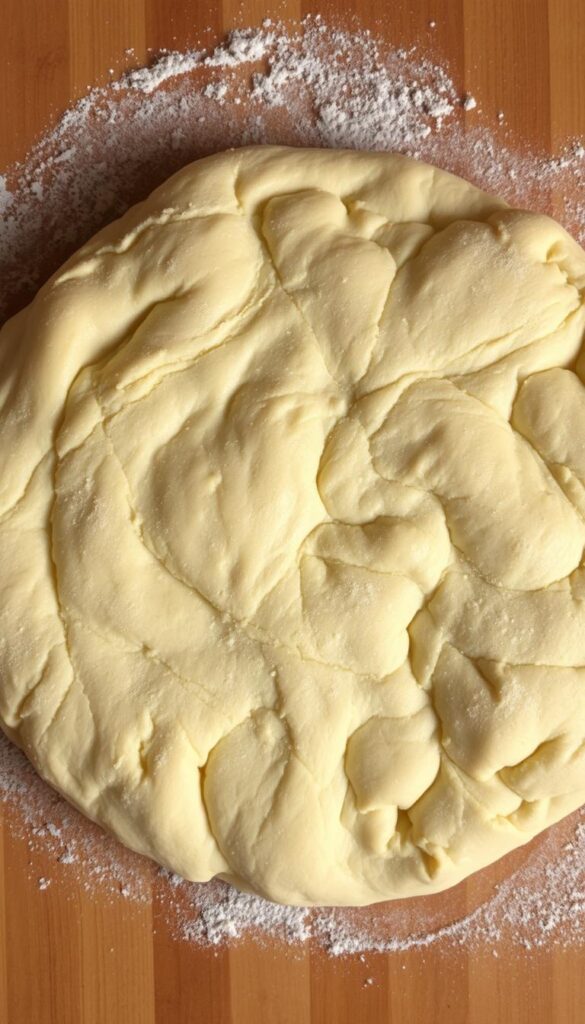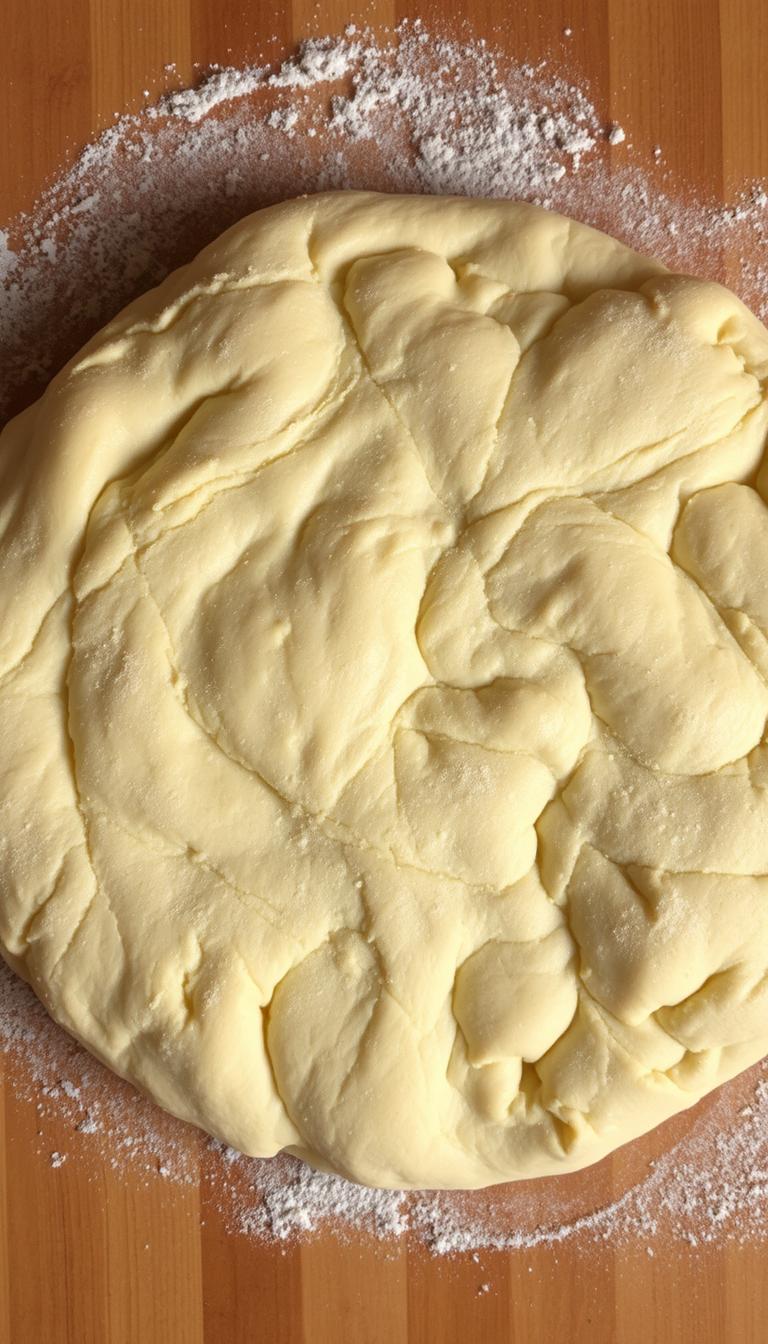Introduction to Classic Neapolitan Pizza Dough
When you think of pizza, the image of a thin, crispy crust topped with fresh ingredients likely comes to mind. The foundation of this beloved dish is the dough, which is simple yet profoundly impactful, embodying the spirit of Naples, Italy, where pizza was born. Crafting classic Neapolitan pizza dough is not just about mixing flour and water; it’s a ritual that connects you to centuries of tradition and the heart of Italian cuisine.
The Origins of Neapolitan Pizza
Originating in Naples during the late 18th century, Neapolitan pizza was a food of the people, initially sold by street vendors. It quickly gained popularity, leading to the establishment of pizzerias. This culinary gem was celebrated for its simplicity and quality; just a few ingredients combined to create something magnificent. The Margherita pizza, adorned with vibrant tomatoes, fresh mozzarella, and fragrant basil, was named after Queen Margherita of Savoy, symbolizing the colors of the Italian flag.
Unique Ingredients and Flavors
The beauty of Neapolitan pizza dough lies in its minimalism. The ingredients—high-protein flour, water, sea salt, and a touch of yeast—are carefully selected to achieve the perfect balance of flavor and texture. The flour, often a finely milled “00” type, contributes to a light, airy crust that’s chewy yet crisp when baked at high temperatures. The fermentation process, which can take several hours or even days, develops a depth of flavor that elevates this dough from ordinary to extraordinary.
Cooking Techniques and Tradition
Baking in a wood-fired oven is a traditional method for making Neapolitan pizza, which reaches temperatures over 800°F. This method creates a unique char and texture that can’t be replicated in a conventional oven. The high heat cooks the pizza quickly, ensuring a beautifully blistered crust while keeping the toppings fresh and vibrant. Mastering this technique can take time, but the reward is a pizza that transports you directly to a bustling Neapolitan pizzeria, complete with the aroma of baked bread and the sound of laughter filling the air.
With each step, from kneading the dough to the final bake, you’re not just making pizza; you’re participating in a rich cultural legacy, creating a dish that has delighted taste buds for generations.

Classic Neapolitan Pizza Dough
Description
Craft a delicious, chewy base for your pizza with this classic Neapolitan dough recipe. Just flour, water, salt, and yeast create a perfect canvas for your favorite toppings!
Ingredients
Classic Neapolitan Pizza Dough Ingredients
Instructions
Gather Your Ingredients
-
Combine Dry Ingredients
In a large mixing bowl, combine 4 cups of all-purpose flour and 1 teaspoon of fine sea salt. Mix them together gently with your hands or a whisk to ensure they’re well blended.Using high-quality flour will enhance the dough's texture. If you can, opt for '00' flour for the most authentic Neapolitan experience. -
Activate the Yeast
In a separate bowl, dissolve 1 teaspoon of active dry yeast in 1 ¾ cups of lukewarm water (about 100°F). Let it sit for about 5-10 minutes until it becomes frothy.Make sure the water isn't too hot, or it can kill the yeast. This step is crucial for getting that lovely rise!
Mix and Knead the Dough
-
Combine Wet and Dry Ingredients
Once the yeast is frothy, pour it into the bowl with the flour and salt mixture. Stir with a wooden spoon or your hands until a shaggy dough forms.Don't be afraid to get your hands dirty! This part can be messy but is incredibly rewarding. -
Knead the Dough
Transfer the dough to a floured surface and knead for about 8-10 minutes until it's smooth and elastic. You should be able to stretch it without tearing.If the dough feels too sticky, sprinkle a little more flour as you knead. But be careful not to add too much!
Let It Rise
-
First Rise
Shape the kneaded dough into a ball and place it in a lightly oiled bowl. Cover it with a damp cloth or plastic wrap and let it rise in a warm place for about 1-2 hours, or until it doubles in size.If your kitchen is cool, you can place the bowl in an oven with just the light on to create a warm environment. -
Punch Down and Rest
Once it has risen, gently punch down the dough to release the air. Divide it into 4 equal pieces and shape each piece into a ball. Let them rest on a floured surface, covered with a cloth, for another 30 minutes.This resting period is essential for developing flavor and making the dough easier to stretch.
Shape Your Pizzas
-
Form the Pizza Base
Take one dough ball and flatten it gently with your fingers, then stretch it outwards from the center using your hands. Aim for a 10-12 inch round that’s thicker at the edges for the crust.Avoid using a rolling pin, as it can deflate the dough. Use your hands to maintain those lovely air bubbles.
Final Tips
-
Preheat Your Oven
While shaping the pizzas, preheat your oven to its highest setting (around 500°F or higher if possible) and place a pizza stone or baking sheet inside to heat up.A hot oven is key to achieving that perfect crust! If you have a pizza peel, dust it with flour before placing your shaped dough on it.
Note
- Use high-protein bread flour for a chewier crust; all-purpose flour can be used but may yield a softer texture.
- Ensure the water temperature is around 100°F (37°C) for optimal yeast activation.
- Knead the dough for at least 10 minutes to develop gluten, which contributes to the dough's structure.
- Allow the dough to rise in a warm, draft-free area for 1-2 hours until doubled in size.
- For enhanced flavor, consider a cold fermentation in the refrigerator for 24-72 hours before shaping.
- When shaping, avoid using a rolling pin; instead, use your hands to stretch the dough to maintain air bubbles.
- Preheat your oven with a pizza stone or steel inside for at least 30 minutes at the highest temperature (typically around 500°F/260°C).
- Use minimal toppings to let the dough shine; classic options include San Marzano tomatoes, fresh mozzarella, basil, and a drizzle of olive oil.
- If using fresh mozzarella, drain it well to prevent excess moisture from making the crust soggy.
- For a crispier crust, bake the pizza directly on the stone or steel rather than on a baking sheet.
- Store leftover dough in an airtight container in the refrigerator for up to a week or freeze for longer storage.

